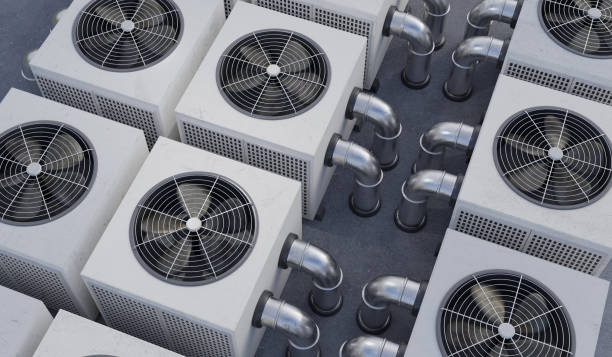In today’s fast-paced industrial environments, maintaining air quality and ensuring workplace safety is more important than ever. Industrial Ventilation Systems play a vital role in achieving these goals by regulating airflow, removing contaminants, and creating a healthier environment for workers. A well-designed ventilation solution doesn’t just keep employees safe; it also boosts productivity, reduces downtime, and extends the life of machinery.
Understanding the Role of Industrial Ventilation Systems
Industrial settings generate pollutants such as dust, fumes, vapors, and excess heat. Without proper airflow management, these hazards can accumulate, creating unsafe conditions. Industrial air ventilation systems are designed to control these pollutants at the source, ensuring cleaner, healthier air throughout the facility. From large factories to smaller workshops, having the right system in place is essential for compliance with health standards and for maintaining employee well-being.
Key Components of Industrial Ventilation Systems
An effective system consists of several parts working together to provide optimal airflow and contaminant removal. These include:
- Industrial Exhaust Fans – Extract harmful fumes, smoke, and heat from enclosed areas.
- Dust Collection Systems – Capture fine particles at the source, preventing respiratory hazards.
- Industrial Air Filtration Units – Purify air to remove contaminants before circulation.
- Ductwork and Distribution Networks – Ensure proper air movement across the facility.
Each element must be properly designed and maintained to maximize efficiency and safety.
The Connection Between Ventilation and Productivity
Good air quality directly impacts employee performance. Poorly ventilated workplaces can cause fatigue, headaches, or respiratory problems, all of which reduce productivity and increase absenteeism. On the other hand, industrial ventilation systems provide a steady supply of fresh air, regulate temperature, and maintain comfortable humidity levels. When workers feel healthier and more comfortable, they perform tasks more effectively and with greater precision.
HVAC System Integration in Industrial Settings
A modern HVAC system for industrial buildings often integrates heating, cooling, and ventilation functions into one solution. This not only maintains optimal air quality but also improves energy efficiency. When HVAC for industrial buildings is properly configured, it ensures that airflow supports both human comfort and machinery operation, balancing temperature control with pollutant removal.
Factory Ventilation System Design Considerations
When designing a factory ventilation system, several factors must be taken into account:
- Type of Pollutants – Dust, fumes, gases, or heat all require different solutions.
- Building Layout – Large open spaces need different airflow strategies than smaller, compartmentalized areas.
- Worker Placement – Ventilation should be designed to protect employees at workstations.
- Energy Efficiency – Systems should minimize energy waste while maximizing effectiveness.
A carefully planned ventilation layout ensures that pollutants are captured before they spread throughout the facility.
Industrial Air Filtration and Dust Collection Systems
Air filtration and dust collection systems are indispensable for industries dealing with hazardous particles. For example, woodworking, welding, and chemical processing facilities generate airborne pollutants that can cause long-term health risks. Installing high-performance industrial air filtration units and dust collection systems helps reduce exposure, maintain compliance with environmental standards, and protect both workers and equipment.
The Role of Industrial Exhaust Fans
Industrial exhaust fans are one of the simplest yet most effective tools for controlling airflow. They remove contaminated air and replace it with fresh air, maintaining a consistent balance inside the facility. In high-heat environments like foundries or metalworking shops, exhaust fans also play a critical role in reducing temperature buildup, preventing overheating of both workers and machinery.
Benefits of Commercial Ventilation Systems
While commonly associated with factories, commercial ventilation systems are equally important in warehouses, office buildings within industrial complexes, and large retail spaces. These systems help maintain proper indoor air quality, reduce allergens, and provide comfort for both employees and customers. For industrial facilities with attached office areas, integrating both commercial and industrial solutions creates a seamless and healthy environment throughout the building.
Compliance and Safety Regulations
Proper industrial air ventilation is not just a matter of comfort—it’s a legal requirement in many industries. Regulatory agencies set strict guidelines to protect workers from hazardous exposures. Regular inspections and adherence to safety standards ensure compliance and reduce the risk of fines, legal action, or shutdowns. An investment in reliable ventilation is also an investment in regulatory peace of mind.
Long-Term Cost Savings Through Efficient Ventilation
Although installing an industrial ventilation system requires upfront investment, the long-term savings are substantial. Benefits include:
- Lower healthcare costs due to improved worker health.
- Reduced absenteeism and turnover.
- Lower equipment maintenance costs due to controlled dust and contaminants.
- Energy efficiency when systems are properly designed and maintained.
In many cases, businesses see a return on investment within just a few years.
Final Thoughts
Industrial Ventilation Systems are critical for ensuring safety, improving air quality, and boosting productivity. From integrating advanced HVAC systems to leveraging dust collection and exhaust fans, these solutions create healthier workplaces that support long-term business success. Whether you’re upgrading a factory ventilation system or implementing new air filtration solutions, investing in proper ventilation is one of the smartest decisions an industrial facility can make.
FAQs
- What industries benefit most from industrial ventilation systems?
Manufacturing, chemical processing, food production, and metalworking facilities all require strong ventilation to control pollutants. - How does a factory ventilation system improve employee health?
By removing contaminants, regulating airflow, and balancing temperature, it reduces fatigue, respiratory issues, and heat stress. - Are industrial exhaust fans enough on their own?
While useful, exhaust fans should be paired with dust collection systems and air filtration for maximum effectiveness. - What is the role of HVAC in industrial buildings?
Industrial HVAC systems combine heating, cooling, and ventilation to create safe, efficient, and comfortable environments. - How often should ventilation systems be inspected?
Ideally, systems should be inspected every 6–12 months to ensure compliance, efficiency, and worker safety.



